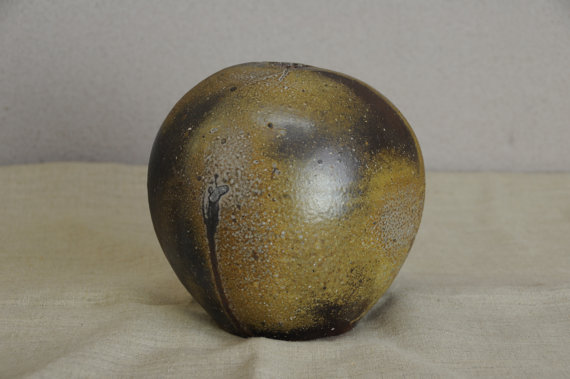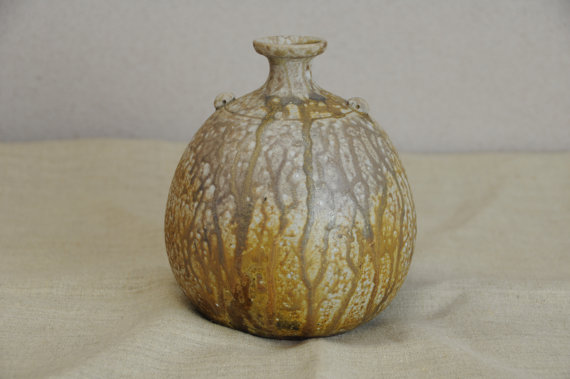Japanese Potteries(Explanations to the technical terms of ceramics No.8)
There are various technical words on potteries. Here are some of those, for which I'd like to give you some remarks.
Pottery Pots
Let's look around in your house. Can you find a pottery pot? In most of the households nowadays,the answer may be 'no'. Then,why do they still continue to produce them?
Tracing the origin in Japan,it is known that pottery pots appeared twelve thousand years ago. People had lived day by day staving off hunger pains by catching fishes and animals. Before turning to the winter season,many pots were necessary for storing various nuts. The role of pots as equipment used in rituals were also important. Pots were used when praying for safety with offering tributes to God of Fire or God of Heaven.
Pots were also used for making foods aged,matured or ferment,such as Sakatsubo (wine pots) and Tsukemonotsubo (pots for Japanese pickled vegetables). By the way,Korean workmen to produce big pots for Kimchi (Korean pickles) called Onggi are also still working so actively today. In that way,pottery pots have been appreciated as an important tool to make Sake matured or Tsukemono rich and tasty with their shape being thick enough to cut off the influence of the outside air.
The tea ceremony came into fashion in the 16th century,and together with this,Chatsubo (tea leaves pots) began to be broadly distributed,and manufacturing such pots in Bizen or Shigaraki became very active. Chatsubo is a pot to keep tea leaves before finely ground. From the early 17th century to the mid-19th century,there had been marches forming long lines of people to carry Chatsubo(s) to persons of power of the time in Edo (Tokyo) all the way from Kyoto. Such pots filled with the important tea leaves were sealed with Japanese premium papers and secured by many people in line walking the distance of 500 kilometers.
Kotsutubo (funerary urns) are one of the pots still being used today,which are kind of pots for placing the ashes of the dead in the grave. They are about 20 cm in height and usually of white porcelain. Formerly,they used to put grains or so into the pots praying for the dead not to be in trouble of food shortage in the other world.
There is a kind of Kotsutubo called Busshari in which the ashes of the Buddha is put,which size is not big as it is for putting a small part of finely ground ashes of the Buddha. Rokuon-ji temple (or called Kinkaku-ji) in Kyoto is a pagoda (called Shariden) in which Busshari is enshrined. Such a magnificent building which outer surface is decorated with gold is said to be a consequence of belief in Buddhism.
In Okinawa,they have another type of Kotsutubo called Zushigame that is shaped like a house. It is such big as a person can just hold it in his arms,and they put the ashes of the entire body in it. Some of them are so big to put the ashes of couples or family members.
Like this,we have seen various types of practical pots and found that people have treasured such pots putting something important in it. It had been considered in a sense that some spiritual power was in the pots as they altered water to be Sake,or in another way,they had been a kind of equipment to send the dead to the other world.
Something for appreciating such special existence are Kazaritsubo (decorated pots),the type of which varies from one that has paintings on its body to something very simple. Probably it may be better to say that people appreciate the power in a pot rather than the pot itself,because a pot contains the infinite power connoting the universe although we can't know that from the outer surface of it.
You can purchase the products. Click an item to view its detail at Marketplace.






